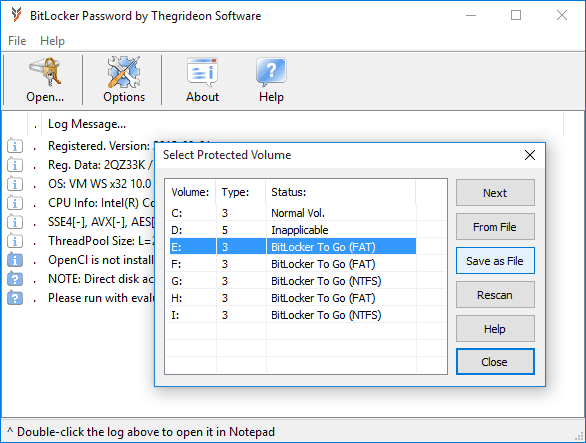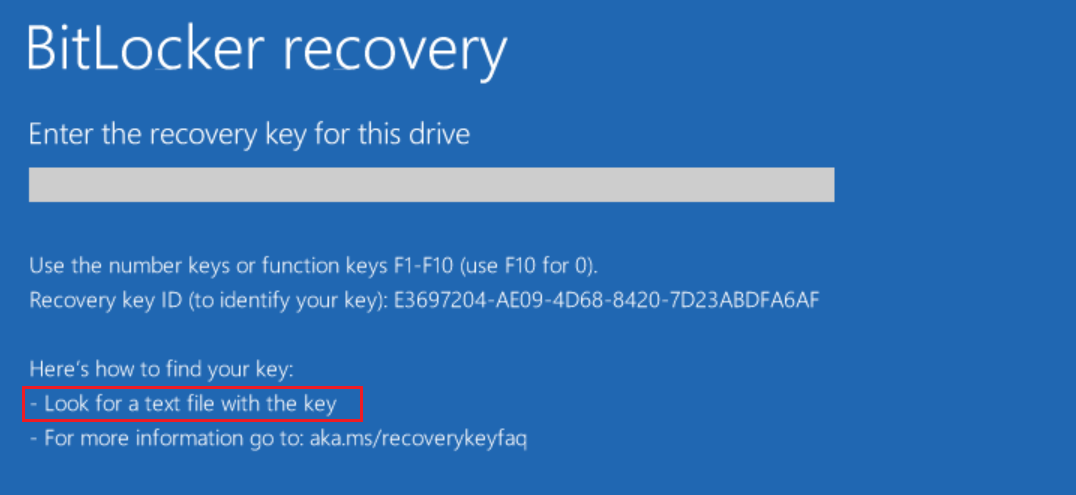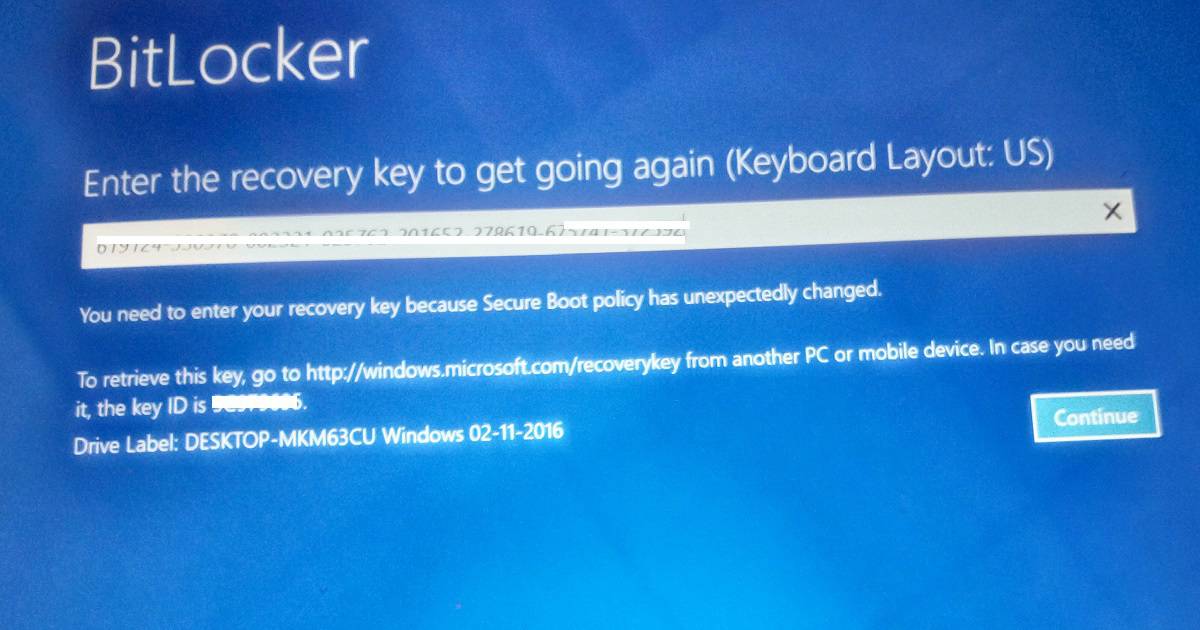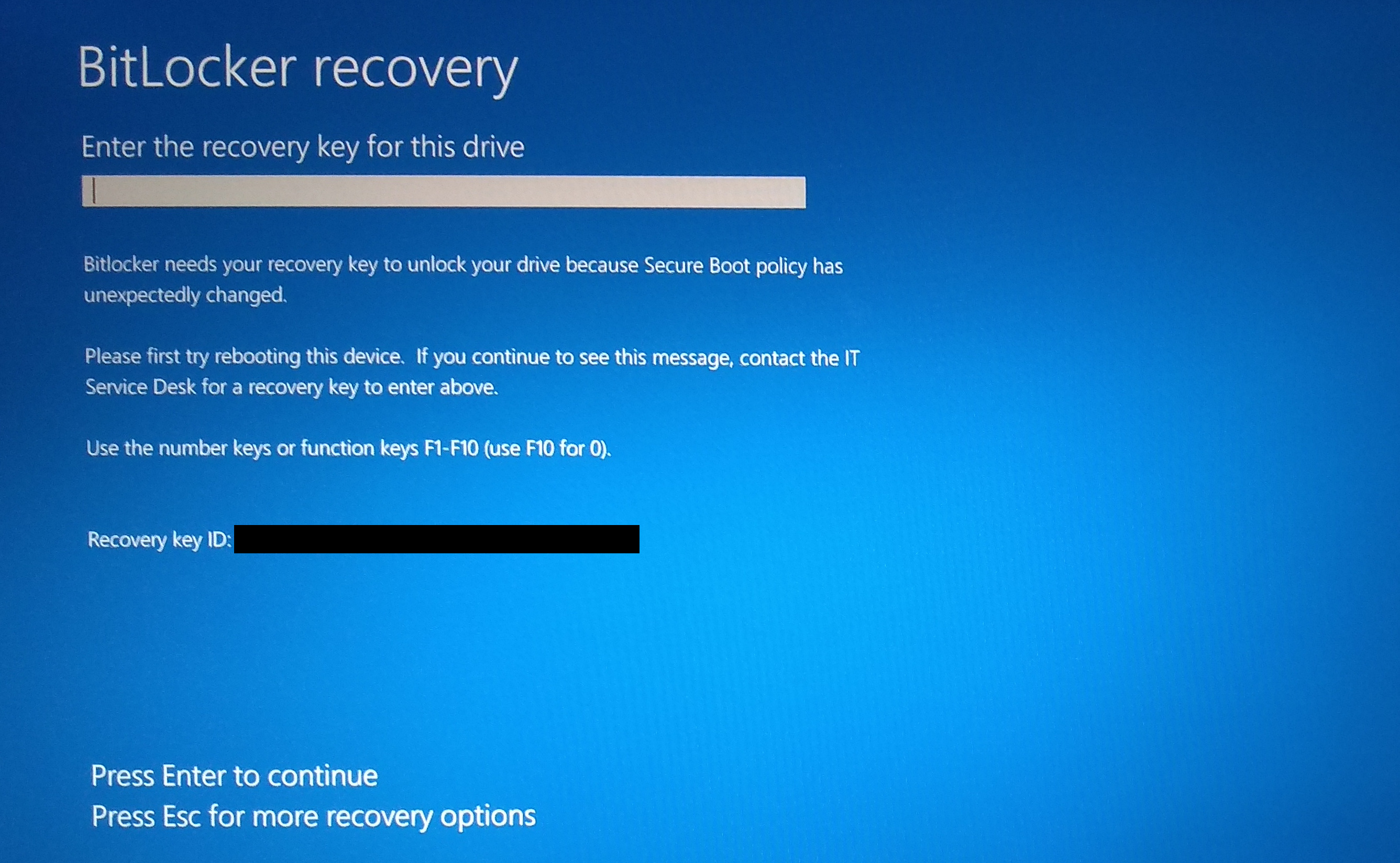
- #BITLOCKER RECOVERY PASSWORD FULL#
- #BITLOCKER RECOVERY PASSWORD PASSWORD#
- #BITLOCKER RECOVERY PASSWORD WINDOWS#
Once a live memory image has been created using warm-boot method *, it is possible to use Passware Kit to extract the VMK and decrypt the volume.
#BITLOCKER RECOVERY PASSWORD WINDOWS#
When Windows displays a standard Windows user login screen, as above, this means that the system BitLocker volume is mounted and the VMK resides in memory. If a given BitLocker volume is mounted, the VMK resides in RAM. Using Memory Images for Instant Decryption of BitLocker Volumes
#BITLOCKER RECOVERY PASSWORD FULL#
Operating system volumes cannot use this type of key protector.Īny of these protectors encrypt a BitLocker Volume Master Key (VMK) to generate a Full Volume Encryption Key (FVEK), which is then used to encrypt the volume. Active Directory Domain Services account. BitLocker uses domain authentication to unlock data volumes.

It is a sequence of 48 digits divided by dashes.
#BITLOCKER RECOVERY PASSWORD PASSWORD#
A user-supplied password is used to access the volume.

BitLocker uses input from a USB memory device that contains the external key. A PIN is four to twenty digits or if you allow enhanced PINs, four to twenty letters, symbols, spaces, or numbers. BitLocker uses a combination of the TPM and a user-supplied Personal Identification Number (PIN). In general, TPM-based protectors can only be associated to an operating system volume. If you specify this protector, users can access the encrypted drive as long as it is connected to the system board that hosts the TPM and the system boot integrity is intact. BitLocker uses the computer’s TPM to protect the encryption key. The list of protectors will be displayed as follows:ĭetailed information on each protector type, in accordance with Microsoft documentation, is provided below: (where C: is the name of the mounted BitLocker-encrypted volume) To list the protectors of a given BitLocker volume, type the following command in command-line prompt (cmd): manage-bde -protectors -get C:

First, you determine the ID of the numeric password for drive c: manage-bde -protectors -get c: The command line tool manage-bde.exe is capable of doing this.

If the group policy is enabled after the drives are already encrypted, it will have no effect and the key will have to be manually transferred to the Active Directory. This ensures that BitLocker will wait until mobile users are reconnected to AD before it encrypts the data. In addition, it makes sense to activate the Do not enable BitLocker until recovery information is stored to AD DS for operating system drives option. The key package is used to recover data on a physically damaged drive. You can choose between Backup Restore Password and Key Packages and Backup Restore Passwords Only. GPO setting to backup recovery keys for system drives in Active Directoryįurthermore, you can configure which data will be stored in the AD.


 0 kommentar(er)
0 kommentar(er)
